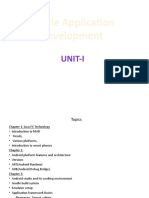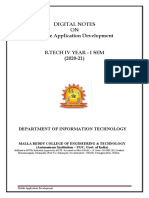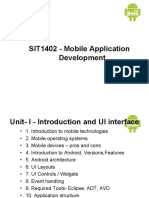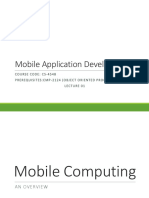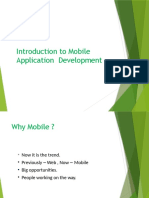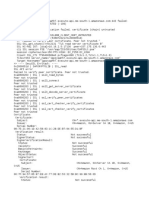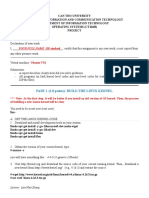0% found this document useful (0 votes)
8 views55 pagesLecture 01
The document outlines a course on Mobile Application Development, covering topics such as mobile technologies, Android development, user interface design, and mobile application testing. It includes statistics on smartphone usage, the evolution of mobile technologies, and various development approaches like native, hybrid, and mobile web applications. Additionally, it discusses mobile application architecture, design patterns, dependency management, and guidelines for app distribution and review.
Uploaded by
danushka3600Copyright
© © All Rights Reserved
We take content rights seriously. If you suspect this is your content, claim it here.
Available Formats
Download as PDF, TXT or read online on Scribd
0% found this document useful (0 votes)
8 views55 pagesLecture 01
The document outlines a course on Mobile Application Development, covering topics such as mobile technologies, Android development, user interface design, and mobile application testing. It includes statistics on smartphone usage, the evolution of mobile technologies, and various development approaches like native, hybrid, and mobile web applications. Additionally, it discusses mobile application architecture, design patterns, dependency management, and guidelines for app distribution and review.
Uploaded by
danushka3600Copyright
© © All Rights Reserved
We take content rights seriously. If you suspect this is your content, claim it here.
Available Formats
Download as PDF, TXT or read online on Scribd
/ 55



